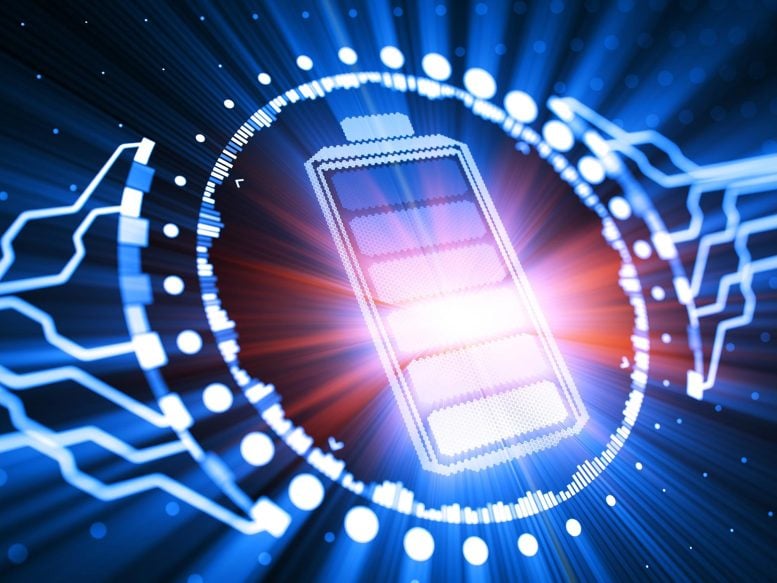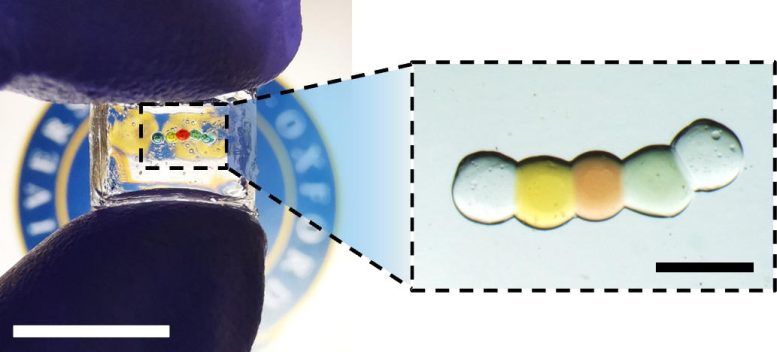
Oxford researchers created a bio-integrated power source using ion gradients in hydrogels, opening new possibilities for wearable and implantable medical devices.
Researchers from the University of Oxford have achieved a major advancement toward realizing miniature bio-integrated devices, capable of directly stimulating cells. Their findings were recently published in the journal Nature.
Small bio-integrated devices that can interact with and stimulate cells could have important therapeutic applications, such as targeted drug delivery and promoting faster wound recovery. A major obstacle, however, has been providing an efficient microscale power source for these devices, a challenge that has remained unsolved.
To address this, researchers from the University of Oxford’s Department of Chemistry have developed a miniature power source capable of altering the activity of cultured human nerve cells. Inspired by how electric eels generate electricity, the device uses internal ion gradients to generate energy.

The miniaturized soft power source is produced by depositing a chain of five nanolitre-sized droplets of a conductive hydrogel (a 3D network of polymer chains containing a large quantity of absorbed water). Each droplet has a different composition so that a salt concentration gradient is created across the chain. The droplets are separated from their neighbors by lipid bilayers, which provide mechanical support while preventing ions from flowing between the droplets.
Generating Electricity from Ion Gradients
The power source is turned on by cooling the structure to 4°C (39°F) and changing the surrounding medium: this disrupts the lipid bilayers and causes the droplets to form a continuous hydrogel. This allows the ions to move through the conductive hydrogel, from the high-salt droplets at the two ends to the low-salt droplet in the middle. By connecting the end droplets to electrodes, the energy released from the ion gradients is transformed into electricity, enabling the hydrogel structure to act as a power source for external components.
In the study, the activated droplet power source produced a current which persisted for over 30 minutes. The maximum output power of a unit made of 50 nanolitre droplets was around 65 nanowatts (nW). The devices produced a similar amount of current after being stored for 36 hours.

Regulating Neural Activity with Soft Power
The research team then demonstrated how living cells could be attached to one end of the device so that their activity could be directly regulated by the ionic current. The team attached the device to droplets containing human neural progenitor cells, which had been stained with a fluorescent dye to indicate their activity. When the power source was turned on, time-lapse recording demonstrated waves of intercellular calcium signaling in the neurons, induced by the local ionic current.
Dr Yujia Zhang (Department of Chemistry, University of Oxford), the lead researcher for the study, said: ‘The miniaturized soft power source represents a breakthrough in bio-integrated devices. By harnessing ion gradients, we have developed a miniature, biocompatible system for regulating cells and tissues on the microscale, which opens up a wide range of potential applications in biology and medicine.’
According to the researchers, the device’s modular design would allow multiple units to be combined in order to increase the voltage and/or current generated. This could open the door to powering next-generation wearable devices, bio-hybrid interfaces, implants, synthetic tissues, and microrobots. By combining 20 five-droplet units in series, they were able to illuminate a light-emitting diode, which requires about 2 Volts. They envisage that automating the production of the devices, for instance by using a droplet printer, could produce droplet networks composed of thousands of power units.
Professor Hagan Bayley (Department of Chemistry, University of Oxford), the research group leader for the study, said: ‘This work addresses the important question of how stimulation produced by soft, biocompatible devices can be coupled with living cells. The potential impact on devices including bio-hybrid interfaces, implants, and microrobots is substantial.’
Reference: “A microscale soft ionic power source modulates neuronal network activity” by Yujia Zhang, Jorin Riexinger, Xingyun Yang, Ellina Mikhailova, Yongcheng Jin, Linna Zhou and Hagan Bayley, 30 August 2023, Nature.
DOI: 10.1038/s41586-023-06295-y
Never miss a breakthrough: Join the SciTechDaily newsletter.
2 Comments
And so it begins…
I dunno. Doesn’t mention anything about ELECTROLYTES, which is what PLANTS CRAVE!!